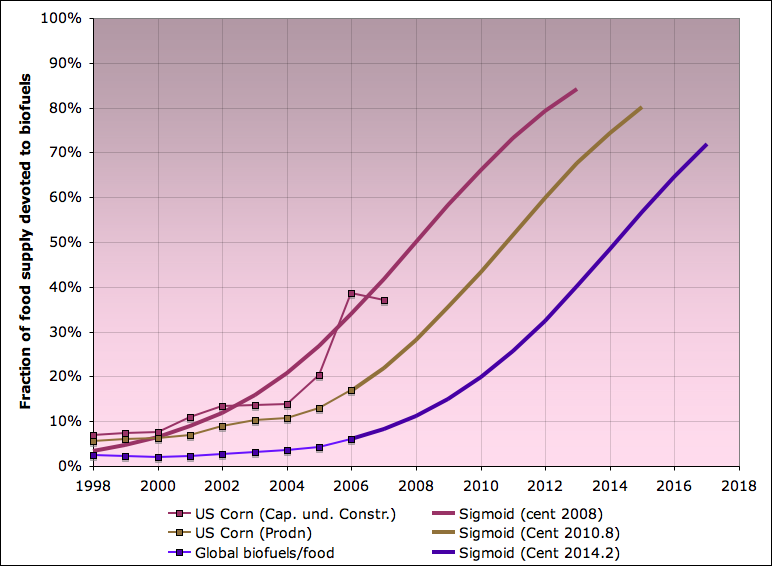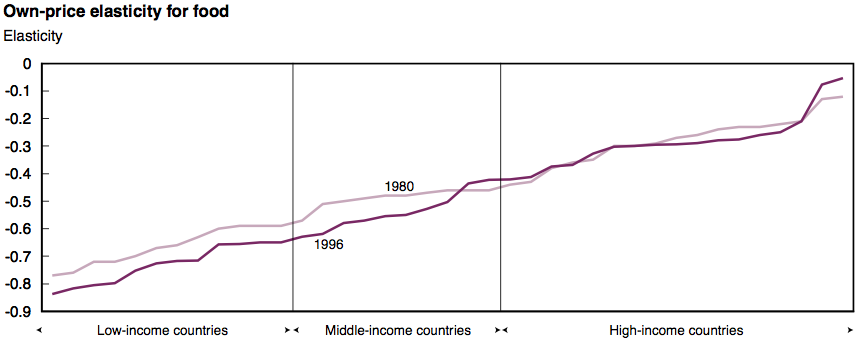Agrofuels (first-gen biofuels made from food crops) are self-evidently one of the worst ideas humans have ever had, given the scale of the use of fuels and their abysmal net-energy picture. The problems with them are so enormous and so obvious that any rational civilization would have simply dropped the idea without a murmur and gone on to explore other avenues. That's not happening, of course.
Algae is a nice thought, of course, as is cellulosic ethanol. However, neither of these is out of the starting gate yet, while agrofuels are already climbing into the hyper-acceleration section of the adoption sigmoid (shamelessly cribbed from The Oil Drum):

With a head start like this for agrofuels, along with the added economic value of ethanol compared to just growing food, along with the relative price elasticities of food in rich nations vs. poor ones, I wonder if second-gen fuels will stand a chance over the next 10 years. If they don't convincingly defeat agrofuels within the next decade, it may be too late for a large segment of the human population.

The reason price elasticity is so important is that it indicates that if agrofuel production follows the sigmoid given above, the inevitable rising food prices will affect the poor much more than the rich. Fuel use is notoriously price-inelastic across all income levels. As a result we have price inelasticity for food in rich nations, and price inelasticity for fuel in both rich and poor nations.. The only elasticity left in this (admittedly hand-wavy) picture is for food in poor countries. That suggests strongly that in a food-fuel competition that drives up global food and fuel prices, there will be one identifiable let of losers.
Read the whole biofuel analysis at
http://www.theoildrum.com/node/2431 - it's a good one.